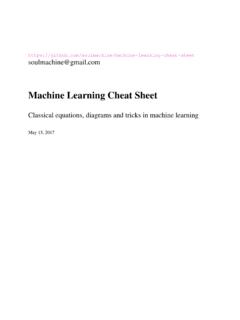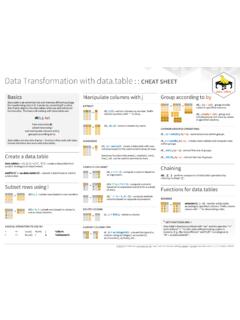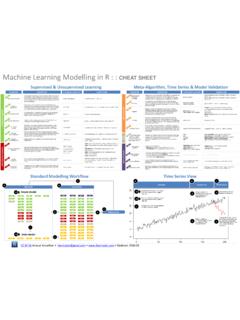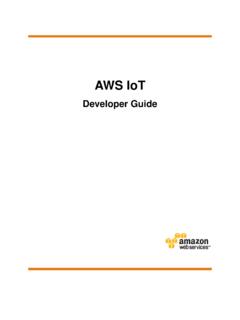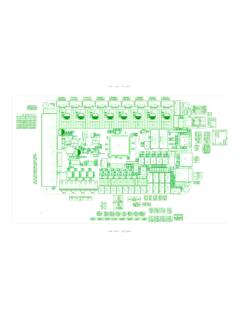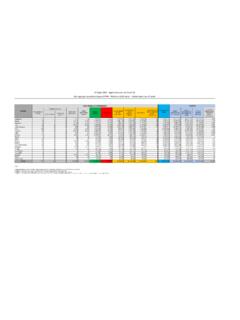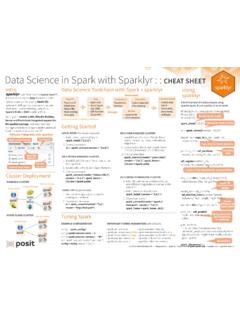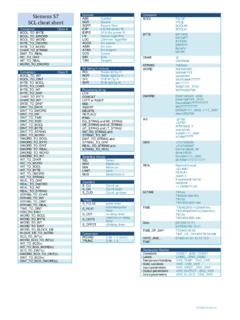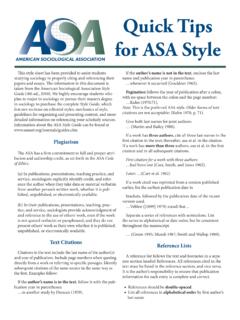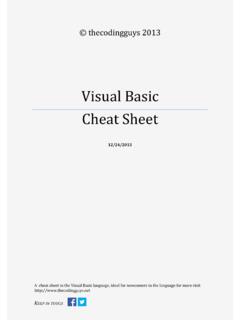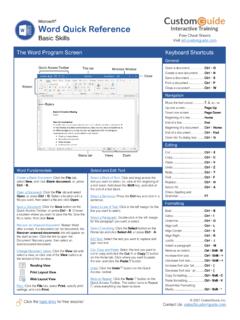Transcription of SAS <-> R :: CHEAT SHEET
1 SAS <-> R :: CHEAT SHEETI ntroductionThis guide aims to familiarise SAS users with examples make use of tidyverse collection of tidyverse:Attach tidyverse packages for ("tidyverse")library(tidyverse)R data here in data frames , and occasionally vectors (via c( ) )Other R structures (lists, ) are not explored shortcuts: <-Alt+ -%>%Ctrl+ Shift+ mDatasets; drop, keep & rename variablesdatanew_data;setold_data;run;ne w_data <-old_datadata new_data(keep=id);set old_data(drop=job_title);run;new_data <-old_data %>%select(-job_title)%>%select(id)data new_data(drop= temp:);set old_data;run;new_data <-old_data %>%select( -starts_with("temp")data new_data;set old_data;renameold_name=new_name;run;new _data <-old_data %>%rename(new_name =old_name)Conditional filteringdata new_data;set old_data;ifSex="M";run;new_data <-old_data %>%filter(Sex== "M")data new_data;set old_data;ifyearin(2010,2011,2012);run;ne w_data <-old_data %>%filter(year%in% c(2010,2011,2012))data new_data;set old_data;byid; ;run;new_data <-old_data %>%group_by(id)%>%slice(1)data new_data;set old_data;if dob>"25 APR1990"d;run;new_data <-old_data %>%filter(dob> ("1990-04-25"))New variables, conditional editingdata new_data;set old_data;total_income= wages+ benefits ;run.)
2 New_data <-old_data %>%mutate(total_income = wages+ benefits)data new_data;set old_data;if hours> 30then full_time= "Y";else full_time= "N";run;new_data <-old_data %>%mutate(full_time = if_else(hours> 30, "Y" , "N"))data new_data;set old_data;if temp> 20then weather= "Warm";else if temp> 10then weather= "Mild";else weather = "Cold";run;new_data <-old_data %>%mutate(weather = case_when(temp> 20~ "Warm",temp> 10~"Mild",TRUE~ "Cold" ) )Counting and Summarisingproc freqdata = old_data;tablejob_type;run;old_data%>%co unt( job_type)proc freqdata = old_data;tablejob_type*region;run;old_da ta%>%count(job_type,region)proc summary data = old_datanway;classjob_typeregion ;output out = new_data;run;new_data<-old_data%>%group_by( job_type,region)%>%summarise( Count= n( ) )proc summary data = old_datanway;class job_typeregion ;varsalary ;output out = new_datasum( salary)=total_salaries;run;new_data<-old_data%>%group_by( job_type, region ) %>%summarise(total_salaries= sum( salary),Count = n( ) )Combining datasetsdata new_data;setdata_1 data_2 ;run;new_data<-bind_rows(data_1,data_2 )data new_data;mergedata_1(in= in_1) data_2;by id;if in_1;run.
3 New_data<-left_join( data_1, data_2, by = "id") rbind( ) which produces error if columns are not identicalLots of summary functions in both languagesSwap summarise( ) for mutate( ) to add summary data to original dataEquivalent without nwaynot trivially producedFor percent, add:%>% mutate(percent = n*100/sum(n)) full_join( ), right_join( ) ,inner_join( )Could use slice(n( ))for lastNote order contains( ) , ends_with( )Some plotting in Rggplot( my_data, aes( year, sales) ) +geom_point( ) + geom_line( )ggplot( my_data, aes( year , sales ) ) +geom_point( ) + geom_line( ) + ylim(0, 40) + labs(x = "" , y = "Sales per year")ggplot(my_data, aes( year, sales, colour =dept) ) +geom_point( ) + geom_line( ) ggplot( my_data, aes( year, sales, fill =dept) ) +geom_col( ) ggplot( my_data, aes( year, sales, fill = dept) ) +geom_col( position = "dodge") + coord_flip( )
4 Note colour for lines & points, fill for position = "fill"for 100% stacked bars/colsCC BY SABrendan O Dowd Updated 2022-05 Sorting and Row-Wise Operationsproc sort data=old_data out=new_data;byiddescendingincome;run;ne w_data <-old_data %>%arrange( id,desc( income) )proc sort data=old_datanodup;by id job_type;run;old_data<-old_data%>%arrange( id, job_type)) %>%distinct( )proc sort data=old_datanodupkey;by id;run;old_data<-old_data%>%arrange( id) %>%group_by( id)%>%slice( 1 )data new_data;set old_data;by iddescending income ;if ;run;new_data<-old_data%>%group_by( id) %>%slice( ( income))data new_data;set old_data;prev_id= lag( id);run;new_data<-old_data%>%mutate( prev_id= lag( id, 1 ))data new_data;set old_data;by id;counter+1 ;if counter= 1;run;new_data<-old_data%>%group_by( id) %>%mutate( counter= row_number( ) )Converting and Roundingdata new_data;set old_data;num_var= input("5", 8.
5 ;text_var= put( 5, 8.);run;new_data<-old_data%>%mutate(num_var= ("5")) %>%mutate(text_var= ( 5))data new_data;set old_data;nearest_5= round( x, 5)two_decimals= round( x, )run;new_data<-old_data%>%mutate(nearest_5= round(x/5)*5) %>%mutate(two_decimals= round( x, digits = 2)Creating functions to modify datasets%macro add_variable(dataset_name);data &dataset_name;set &dataset_name;new_variable= 1;run;%mend;%add_variable( my_data);add_variable<-function( dataset_name){dataset_name<-dataset_name%>%mutate(new_variable= 1)return( dataset_name)}my_data<-add_variable( my_data)Dealing with stringsdata new_data;set old_data;iffind( job_title, "Health");run;new_data<-old_data%>%filter(str_detect( job_title, "Health"))data new_data;set old_data;ifjob_title=: "Health" ;run.)
6 New_data<-old_data%>%filter( str_detect( job_title, "^Health"))data new_data;set old_data;substring=substr( big_string, 3, 4); run;new_data<-old_data%>%mutate(substring= str_sub( big_string, 3, 6))data new_data;set old_data;address=tranwrd( address, "Street", "St");run;new_data<-old_data%>%mutate( address= str_replace_all( address, "Street", "St"))data new_data;set old_data;full_name=catx("", first_name, surname);run;new_data<-old_data%>%mutate(full_name= str_c( first_name, surname, sep= ""))data new_data;set old_data;first_word=scan( sentence, 1);run;new_data<-old_data%>%mutate( first_word= word( sentence, 1))data new_data;set old_data;house_number=compress( address, , "dk");run;new_data<-old_data%>%mutate( house_number= str_extract( address, "\\d*"))File operationsOperate in Work libnameto define file locationsOperate in a particular working directory (identify using getwd( ) )Move to other locations using setwd( )libnamelibrary_name"file_location";data ;set data_in_use;run;saveRDS(data_in_use, file="file_ ")orsetwd("file_location")saveRDS( data_in_use, file = " ")libnamelibrary_name"file_location";dat a data_in_use;set ;run;data_in_use <-readRDS("file_ ")orsetwd("file_location")data_in_use <-readRDS(" ")proc export data = my_dataoutfile = " "dbms = csv replace;run;write_csv(my_data , " ")proc import datafile = " "out = my_datadbms= csv;run.
7 My_data<-read_csv(" ")Note noduprelies on adjacency of duplicate rows, distinct( ) does ( )Swap to preserve duplicate maxima: ..slice_max( income )Alternatively: ..filter(income==max(income)) lead( ) for subsequent rowsNote SAS can modify within the macro,whereas R creates a copy within the functionUse ^ for start of string, $ for end of string, "Health$"Returns characters 3 to 6. Note SAS uses <start>, <length>, R uses <start>, <end> str_replace( ) for first instance of pattern onlyDrop sep= ""for equivalent to cats( ) in SASR example preserves punctuation at the end of words, SAS doesn tWide range of regexpsin both languages, this example extracts digits onlyBoth examples assume column headers in csv fileCC BY SABrendan O Dowd Updated 2022-05
